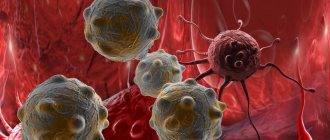Diseases are divided into two groups: contagious and non-contagious. The list of them is very extensive. But the symptoms can be similar for completely different diseases. The first task of the owner is to understand that something is wrong with the pet. A healthy animal is active and has a good appetite. The coat is dry, thick, shiny and smooth, the eyes are clear and clean.
How to tell if your hamster is sick:
- appetite disturbances: complete or partial refusal of food, selective eating of food, increased thirst;
- excessive drooling: wet fur on the chin, neck, chest;
- diarrhea: traces of feces around the anus, wet fur on the back half of the body;
- constipation: stools are dry and hard or absent;
- watery or purulent discharge from the eyes;
- breathing problems: discharge from the nostrils, sniffling, wheezing;
- skin problems: dull coat, tangles, bald spots, wounds and flaking;
- oppression: the hamster has become lethargic and inactive, lies all the time;
- problems of the nervous system: seizures, loss of coordination;
- unnatural formations on the body, swelling.
Any violation of the usual routine should be a cause for concern and a close examination of the animal. The owner can understand whether the hamster is sick much earlier than the veterinarian, since he is familiar with his habits and characteristics.
Main diseases and their causes
Hamsters are susceptible not only to specific diseases that are characteristic of this particular type of rodent, for example, inflammation of the cheek pouch, but can also be infected with viruses, bacteria, and parasites. It is worth noting that most diseases of Syrian and Djungarian hamsters most often occur due to the fault of the owners. Thus, drafts can provoke colds, and an unbalanced diet leads to the development of hypo- and vitamin deficiencies, and can cause disruptions in the gastrointestinal tract and endocrine pathologies. Deficiency of vitamins, minerals, amino acids, and poor-quality feed weaken the animals’ immune potential and resistance.
Predisposing factors that can cause diseases in hamsters include:
- poor-quality diet with poor nutritional ratios;
- poor living conditions (cramped, dirty cage);
- unsuitable indoor microclimate;
- frequent stress, fear, emotional stress;
- improper care of pets.
Hamsters are susceptible to injury and often suffer from metabolic disorders and digestive processes in the body. Dzungarians and Syrians suffer from viral, bacterial, parasitic diseases, as well as non-communicable diseases. Tumors, neoplasms, and allergic manifestations (dermatitis, dermatoses) are often detected in hamsters.
Hypovitaminosis
Important! An improperly equipped cage can lead to injury to a small pet, causing dislocations, sprains, and torn ligaments. When two or more hamsters are kept in one cage, the rodents will fight for territory in real hamster fights. Moreover, such battles can often cause the death of babies or weaker individuals.
Common diseases of Djungarian and Syrian hamsters:
- obesity, diabetes;
- inflammation of the cheek pouch;
- abscesses on the paws;
- mechanical injuries (dislocations, fractures, sprains);
- ophthalmological diseases (keratitis, conjunctivitis);
- respiratory diseases of various etiopathogenesis;
- viral-bacteriological, invasive diseases;
- dermatophytosis;
- dermatitis, dermatoses, mycoses;
- colibacillosis;
- helminthic infestations;
- tularemia;
- false rabies (Aujeszky's disease);
- lymphocytic choriomeningitis;
- dental diseases.
Note that some viral, bacterial infections, parasitic diseases of dwarf hamsters and Syrian hamsters are dangerous for people. A person can become infected with rabies, salmonellosis, tularemia, dermatomycosis, campylobacteriosis, and plague from a rodent.
Inflammation of the cheek pouches in a hamster
If you purchase hamsters in pet stores, from trusted breeders, create optimal living conditions for the pet, and do not neglect the rules of hygiene, many of the diseases that hamsters suffer from can be avoided.
Symptoms of diseases
How can you tell if your hamster is sick? This question interests many breeders of small pets. A healthy hamster has beautiful shiny fur, leads an active lifestyle, especially at night, and shows interest in the world around it. The animal eats food with appetite, makes supplies, and arranges its home. The Djungarian, the Syrian, has clear, clean eyes and an expressive gaze.
Important! You can understand that a rodent is sick not only by external signs, but also by the changed behavior of the hamster.
Main symptoms of diseases:
- decreased activity, lethargy, apathy;
- deterioration of fur condition (wet fur);
- severe itching;
- the appearance of scratches, bald patches, wounds, ulcers on the body;
- discharge from the nose, eyes;
- increased thirst;
- allergies, skin rash;
- bowel dysfunction (diarrhea, constipation);
- frequent urination;
- pallor, cyanosis of mucous membranes;
- sticky eyelids;
- the presence of blood and clots in the urine;
- disturbance of breathing, heart rhythm;
- accumulation of wax and dirt in the ears;
- yellowness, peeling of the skin;
- loss of cheek pouches;
- impaired coordination of movements;
- boils on the body.
In case of injuries or sprains, the hamster limps, sits constantly in the house or hides in the corner of the cage. The rodent loses a lot of weight or, on the contrary, gains weight and gains weight too quickly.
Ringworm in a hamster
Advice! Take a good look at your pet's home. If a hamster suffers from indigestion, cystitis, or endocrine pathologies, an unpleasant specific odor appears, the feces will be liquid, and the space will be filled with excrement.
If the hamster has lost weight, refuses its favorite treats, has watery eyes, swollen eyelids, the pet has become inactive, shows aggression, is breathing frequently, or other symptoms uncharacteristic of a healthy animal are noticeable, you should not ignore the problem.
If your dwarf or Syrian hamster is sick, do not self-medicate. If you discover that the rodent is sick, take it to the veterinary clinic or call a veterinarian at home. The choice of treatment methods depends on the root cause that provoked the soreness.
How can you tell if your pet is sick?
If your pet is sick, he may experience the following changes:
- apathy and lethargy;
- no appetite;
- the wool has become tangled, has lost its shine, is falling out or matted;
- there is discharge from the eyes and nose;
- pollution near the anus;
- constipation and gastrointestinal disorders;
- severe nervousness and aggression of the animal;
- temperature.
Since hamsters have a very fast metabolism, the first symptoms and signs of illness are immediately visible. At the same time, the deterioration of the condition also occurs quickly, which is why it is very important to provide the pet with the necessary help and treatment in a timely manner.
Bacterial and viral diseases of the hamster
Hamsters are very susceptible to diseases caused by pathogenic microorganisms, viruses, and bacteria. Infection is possible by contact, aerogenous, nutritional means, or by eating low-quality feed. Some diseases of bacterial etiology can be transmitted to hamsters from humans and other pets.
Colibacillosis
The infection is caused by Escherichia coli, which parasitizes the gastrointestinal tract of animals. This disease of dzhungarik is also known as “wet tail”, as the sore is manifested by severe diarrhea.
Other symptoms of colibacillosis include:
- decreased, lack of appetite;
- weight loss;
- restless behavior;
- depression, lethargy, apathy;
- drowsiness;
- the presence of wet fur near the anus.
Colibacillosis
Hamster feces with diarrhea have a watery consistency. The hamster constantly curls up into a ball, hides in secluded places in the cage, and looks untidy.
The disease is characterized by an aggressive course and spreads very quickly, therefore, when keeping several animals together in a cage, you must immediately move the sick pet to another home. The disease can be cured only in the early stages of development.
Diplococcosis
An infection of the respiratory tract caused by round microscopic bacteria called diplococci. The main symptoms are lethargy, apathy, decreased activity, discharge from the nose and eyes. If the infection is severe, the dzhungarik refuses food and treats.
The disease requires immediate treatment using special serums. If therapy is not started, the pet’s death occurs on the second or third day.
Salmonellosis
The disease is caused by pathogenic rod-shaped microorganisms - salmonella. With this infection, hamsters experience foamy diarrhea, weakness, apathy, and pale mucous membranes. A sick hamster refuses food, hides in a dark corner, sits motionless, showing no interest in the world around it. The rodent's tummy is enlarged. In the stool you may notice bloody clots, threads, particles of undigested food, and mucus.
Salmonellosis in a hamster
Viral pneumonia
The disease develops against the background of weakened resistance and weakened immune potential. Prolonged hypothermia, chronic otitis, hypo-, avitaminosis can also cause the development of viral pneumonia in animals.
The disease is manifested by abundant mucous, mucopurulent discharge from the eyes, nose, refusal to feed, coughing attacks, and shortness of breath. The hamster has a wet muzzle, hoarse, rapid breathing, and pale mucous membranes. If he shakes his head, his ear, wax has accumulated in the ears, there are crusts and an unpleasant odor emanates, most likely the animal is sick with otitis media, the cause of which is a respiratory illness.
Pneumonia develops against the background of ophthalmological diseases or can provoke eye and ear diseases. With timely treatment, the hamster recovers completely within a week.
Aujeszky's disease
Pseudorabies is a deadly viral disease. The disease manifests itself as severe nervous disorders. The hamster becomes restless and may show aggression. Attacks of excitement are replaced by complete apathy. A sick pet has poor coordination of movements. Muscle spasms and cramps are noted. Death occurs due to paralysis and severe exhaustion. Treatment is carried out with special serums.
Lymphocytic choriomeningitis
One of the viral infections that poses a danger to humans. May be latent (asymptomatic). The main signs are sudden weight loss, decreased activity, refusal to feed, frequent bowel movements, and urination. Most often, the virus is transmitted from a hamster to newborn hamsters. In pregnant females, the disease provokes spontaneous miscarriages.
The infection is incurable, so if your pet is infected, it will unfortunately have to be euthanized.
Oral and dental diseases
Hamsters, like any rodents, grow their incisors throughout their lives, so owners should pay special attention to oral hygiene and the animals' teeth. If the pet does not grind down its teeth, this will lead to injury, damage to the oral mucosa, the development of acute inflammation, the formation of abscesses, and abscesses.
Pathologies and dental diseases in Djungarians and Syrians are manifested by redness of the mucous membranes, hypersalivation, decreased appetite, weight loss, abnormal growth, deformation of the incisors, and inflammation of the cheek pouches.
Inflammation of the cheek pouches is one of the most commonly diagnosed pathologies. It is characterized by inflammation, prolapse (prolapse), and the appearance of pathological formations. The disease develops due to injury to the oral mucosa. With this pathology, the animals behave restlessly, rubbing their cheeks and muzzle with their paws. Appetite decreases. Saliva flows from the mouth. As a rule, the pathological process affects the inner surface of the cheeks.
Long incisors provoke dental diseases in hamsters
To relieve inflammation, you need to rinse your pet’s mouth with an antiseptic solution or chamomile decoction. To normalize digestion, give your hamster probiotics and enzymes.
For neoplasms, surgical treatment, restorative, and symptomatic medications are prescribed.
If your hamster has inflamed cheek pouches, treatment should be carried out by a veterinarian. The specialist will carefully turn out the cheeks and clean them of food debris. Inflammation will be relieved by bactericidal drugs, antiseptics, and medications for local and general treatment. After therapy, the hamster must be kept on a fasting diet for 12–14 hours.
Inflammation of the pouches
The inside of the cheek pouch can be easily damaged by a sharp object. Since the hamster uses it constantly, pieces of food will get into the wound, which will further aggravate the situation. If you suspect, take your baby to the vet. He examines the animal, turning the bags outward. Under no circumstances try to do this yourself: there is a high risk of harming your pet even more. Such wounds are cleaned with conventional bactericidal agents, but first you need to remove food debris from them with special tweezers.
Parasitic, fungal, dermatological diseases and symptoms
Hamsters, regardless of breed, often suffer from parasitic and fungal diseases. Djungarians are diagnosed with lichen, dermatophytosis, and trichomoniasis. The main manifestations of mycoses are severe itching, restlessness, deterioration of the coat, the appearance of rashes on the body, scratching, wounds, and long-term non-healing ulcers. With dermatophytosis, the skin acquires a yellowish tint and is very flaky. If treatment is not started, pathogenic flora penetrates into wounds and scratches, which provokes inflammation in various structures of the dermis.
Wet eczema in a hamster
Important! If a hamster is sick with a parasitic or fungal disease and is kept in the same cage with other rodents, immediately isolate the sick animal and disinfect the pet’s home.
Hamsters are susceptible to dermatitis, dermatoses of various etiologies, as well as allergies. Deterioration in the condition of the coat, partial or complete baldness is provoked by frequent stress, deficiency of vitamins, minerals, external parasites, fungi, and substances of a toxic nature.
Your veterinarian will tell you how to treat mycoses. The pet will be prescribed fungicidal, antibacterial agents, solutions (Miramistin, Chlorhexidine), as well as antiparasitic shampoos.
Drugs used to treat rodents
Some medications are dangerous for the body of hamsters, so it is better to avoid using them. Among them are Penicillin, Ampicillin, Gentamicin and cephalosporins. It is forbidden to use antibiotics without consulting a veterinarian.
To strengthen the body, pets are given vitamin tablets and liquid concentrates.
Fungal infections are treated with the following drugs:
- Triderm.
- Fluconazole.
- Ketoconazole.
- Griseofulvin.
Neoplasms, tumors
Tumors (malignant, benign), pathological growths on the body, legs. ears is a fairly commonly diagnosed pathology in rodents, which can develop for a variety of reasons. Bumps can appear due to injuries, severe bruises, or falls from a height. To begin treatment, you need to establish a diagnosis, so take your pet to a veterinarian.
For benign and malignant tumors, surgical treatment will be prescribed. If the cancer is localized in a hard-to-reach area (oral cavity), or the tumor has metastasized, veterinarians recommend euthanizing the hamster, since no treatment method will give the desired result.
Eye diseases and their treatment
Small animals often suffer from ophthalmological diseases. Allergic, serous, purulent conjunctivitis, cataracts, glaucoma, and uveitis are noted in hamsters. In these diseases, blepharospasm, lacrimation, swelling, swelling, and sticking of the eyelids are observed.
Treatment should begin immediately as soon as you notice the first symptoms. Do not forget that eye diseases can provoke not only a deterioration in visual function, but also cause complete or partial blindness.
Conjunctivitis
In medical therapy, the choice of methods depends on the stage, nature of the disease, and the root cause. Solutions for washing the eyes and ophthalmic drops may be prescribed.
Endocrine pathologies, gastrointestinal diseases
Endocrine disorders, metabolic failures, hormonal imbalances, and disruptions in the digestive tract in most cases are provoked by improper feeding of a small pet. Metabolic disorders can also be hereditary.
Among the most common endocrine pathologies in hamsters are:
- diabetes;
- obesity;
- vascular diseases;
- stone disease;
- polycystic ovary syndrome (in females).
Hormonal imbalances in females most often cause frequent childbirth and an unbalanced diet. Hamsters become lethargic or, on the contrary, irritable. The pet's tummy is swollen and the frequency of bowel movements is disrupted. Treatment is surgical.
Gastrointestinal diseases (poisoning, enteritis, food allergies) develop due to a violation of the feeding regime, if the hamster has a poor-quality, meager diet or due to exposure to various toxins on the body. The diseases are accompanied by unstable stools, rumbling in the stomach, decreased appetite, and lethargy. A veterinarian will tell you how to cure a hamster and what to do if the digestive processes are disrupted, having established an accurate diagnosis and cause.
Obesity in a hamster
Video “Rabies: what is the danger from cute animals?”
In this video, epizootologist Evgenia Shilova will tell you why rabies is dangerous in hamsters and about known cases of their disease.
Sorry, there are no surveys available at this time.
Was this article helpful?
Thank you for your opinion!
The article was useful. Please share the information with your friends.
Yes (100.00%)
No
X
Please write what is wrong and leave recommendations on the article
Cancel reply
Rate the benefit of the article: Rate the author ( 3 votes, average: 5.00 out of 5)
Discuss the article:
Other diseases of hamsters
Hamsters are susceptible to cardiovascular pathologies, which can be congenital or acquired. Among Syrians and Djungarians, problems are detected in the functioning of the excretory system (cystitis, pyelonephritis), nervous disorders (encephalitis), which develop against the background of severe stress, due to overheating. It is worth noting that severe fright can provoke paralysis and cause cardiac arrest, which will lead to the death of the hamster.
In any case, if you notice that your pet’s behavior has changed, your pet has become lethargic and inactive, do not ignore the problem. Many hamster diseases can be cured in the early stages of development. Therefore, be sure to show your pet to a doctor or call a veterinarian at home. However, remember that many diseases and pathologies that occur in hamsters are easier to prevent thanks to proper care and maintenance.
We invite you to join our Zen channel and group on VKontakte or Odnoklassniki, where new articles for pet owners are published.
Similar articles:
- The simplest things that can harm a guinea pig
- Djungarian hamster at home: advice for the future owner
- How to organize leisure time for a guinea pig?
Obesity
The natural lifestyle of a hamster involves constant movement, so when the pet becomes excessively fat, it begins to move little. This situation leads to the development of heart disease. To avoid such a situation, it is necessary to install rides, treadmills and other devices for an active lifestyle in the hamster’s cage.
You should also let the animal out of the cage from time to time - run around on the floor or at least on the table.
And, of course, you should monitor the animal’s nutrition. Do not give him more than the prescribed portion and watch the calorie content of what he eats.











